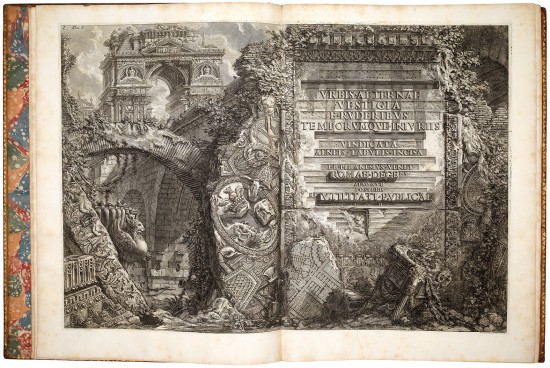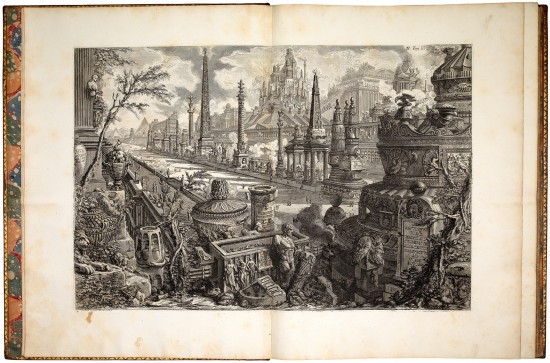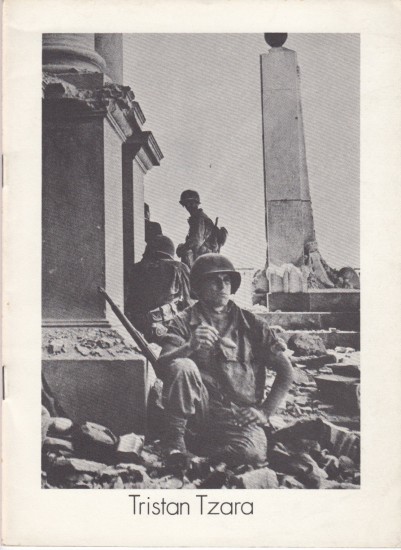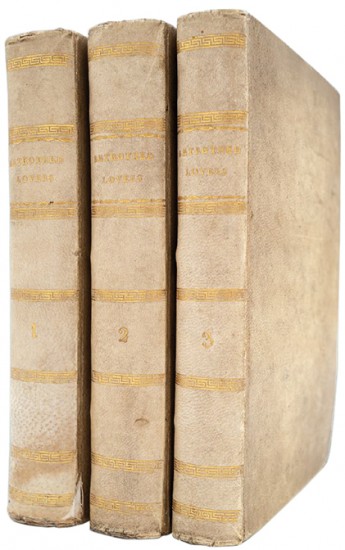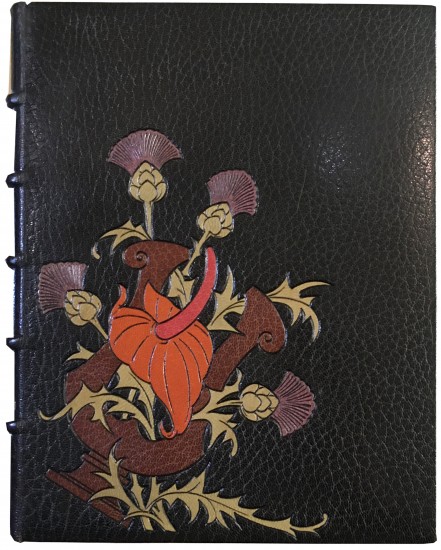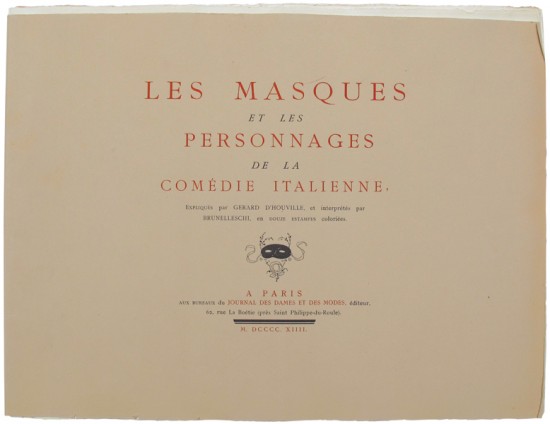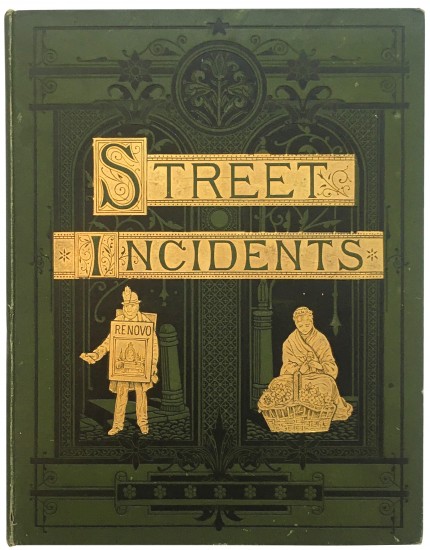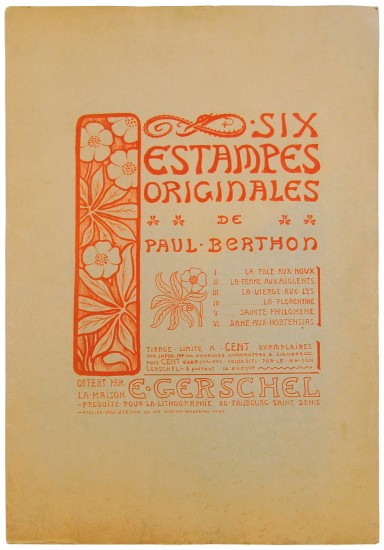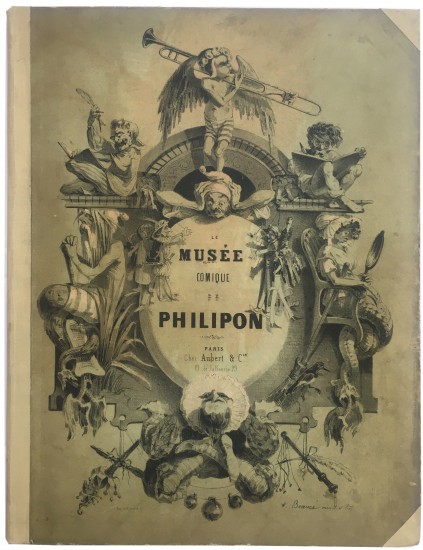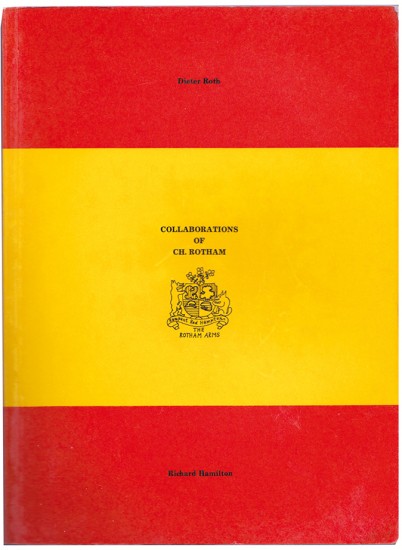Le Antichità Romane
Piranesi, Giovanni Battista
Rome. Nella Stamperia di Angelo Rotili nel Palazzo de' Massimi ... Si Vendono in Roma dai Signori Bouchard, e Gravier ... &c. 1756. 1757
Sold
A good complete copy of the first edition, second issue of Piranesi's Le Antichitá Romane with very good early impressions of the engravings and the two printed folio 'Lettere di Giustificazione'.
This work, which required eight years of careful study and excavation by Piranesi, established his reputation as the leading protagonist of Roman archaeology when it first appeared in 1756. His aim, as with all his archeological publications, was both to record the vanishing past for scholars and to inspire contemporary designers to emulate the achievements of ancient Rome. The work began in controversy - as this copy attests - with Piranesi's search for a patron and dedicatee who would underwrite the cost of the work in return for dedications in each of the volumes. Piranesi considered that he had found this patron in the person of the Irish peer, James Caulfield, Viscount Charlemont, however, Charlemont and his lordship's Roman agent, John Parker, viewed the matter differently and only one payment, the modest sum of 100 scudi, was ever received by Piranesi.
A small number of copies of the Antichità (the number given by Piranesi himself was 70) with the proposed dedications to Charlemont were issued before Piranesi defaced the plates removing the dedications. Prior to the removal, Piranesi had written a long letter to Charlemont (present here in its printed version) stating his position, threatening the removal of the dedications and to publish the whole affair. Receiving no response to his letter (and it is possible that Charlemont never received it), Piranesi had the letter printed and displayed at the Vatican Library, at the Barberini and Corsini Libraries (as per the manuscript note detailed below) and elsewhere in Rome, in an attempt to embarrass Charlemont to pay. Piranesi received no reply and a further and shorter letter was written to Charlemont (also present here in its printed version) announcing Piranesi's intention to publicise the whole affair, that he had removed the dedications and had engraved a new dedication. Piranesi had both letters printed in folio format for inclusion in copies of the Antichità, likely in the Spring of 1757, and it is very likely that this copy was issued at that date or shortly thereafter.
The mediation of Peter Grant, a Scottish Catholic Abbé in Rome, failed to calm matters and, indeed, he sought legal injunctions against Piranesi and against Bouchard and Gravier, the publishers, to force removal of the controversial letters from the Antichità. Piranesi reprinted the two letters, with additional details of the controversy and with illustration in a different format in February 1758.
Volume I explains the urban structure of ancient Rome in terms of its walls, defences and aqueducts as well as its public monuments. Volumes II - III include the plans of the Camera Sepolcrali, and are devoted to the extensive remains of sepulchres around Rome. Volume IV concentrates on the heroic feats of Roman engineering in the form of bridges and monumental structures such as the Curia Hostilia, the substructure of the Temple of Claudius, Hadrian's mausoleum (the Castel Sant'Angelo), and the Theatre of Marcellus. As John Wilton-Ely notes, the work includes plates by or after other artists, chiefly in volumes II and III.
This copy presents a number of interesting features:
- the uncommon leaf with the 'Imprimatur' (dated '25 Gennaro 1756') recto and the list of works by Piranesi available at the time verso is retained.
- the two leaves (S1 - S2) with Piranesi's first letter to Lord Charlemont (dated '25 Agosto 1756') and printed beneath the 'Avviso al Pubblico' is present and includes a manuscript note - see BAL RIBA 2560 - and asterisk: 'Biblioteca * Vaticana / Ho eseguito quant' ho promesso col depositare nel Varticano, e nelle Biblio- / teche che la generosità dell' Eccellentissime Case Corsini e Barberini tirene / esposte al pubblico, non solamente l'originale di queste lettere, ma eziandio / gli anecdoti delle cose che son passate dacché le stesse lettere sono state / scritte sino al presente, le quali son molto più aggravanti di quelle / che qui si leggono. Per tal via può vedersi tutta la storia di quest'Opera'.
- the following leaf features Piranesi's second letter to Lord Charlemont (dated 'Febbraio 1757') recto only.
- the plates VI and VII in vol. I, both single-page, retain their blank conjugates.
A copy of Piranesi's 'Le Antichità Romane' now in the British Library also includes the manuscript note with the asterisk at the foot of the same leaf. BAL RIBA notes that this addendum was 'composed, if not actually written there, by Piranesi' and comparison with Piranesi's hand accords with this idea. That Piranesi caused the addendum to be included in two copies destined for British patrons suggests that his ire at Charlemont was undimmed and that any promotion of his own perspective - as well as publicity for his most extensive work to that date - was desirable.
'The 'Antichità Romane' was an immediate international success and clearly established Piranesi as the foremost artistic proponent of Roman architecture ... His fame was confirmed within a year of publishing 'Le Antichità Romane' by his election to the Society of Antiquaries in London and capped by his belated election to the Accademia di San Luca at the beginning of 1761.' (Andrew Robison).
'The double-page engraved titles of volumes 2 and 3 of Piranesi's Le Antichità Romane display the artist as the most visionary of classical archaeologists. Imaginative and fascinating in all their myriad detail, these two 'restored' views of the great Roman Appian Way have all the overwhelming effect of the modern canyons of New York City, but embellished with classical finials and endless ornament'. (Princeton University, In Search of Art: The English Grand Tour exhibition).
'After two hundred years, the work still remains the vastest picture book of buildings and antiquities in Rome. Almost half the plates record things that have since vanished or been further damaged. It is the first book that attempted to reassemble objects that had been found and then scattered. The big plate of the Roman water system was the first painstaking reconstruction of far flung and complicated ruins, and alone cost him six months of drawing, digging and measuring. This book also went farther than previous attempts to interpret ancient remains in the light of ancient texts, and especially in the light of Vitruvius' description of Roman engineering practice'. (A. Hyatt Mayor, Piranesi, pg. 12).
'By the mid century various intellectual and social changes were beginning to alter the traditional relationship between artist and patron. Piranesi's theme [in the Lettere], therefore, which transcends the tedious events of the affair, is the nobility of an artistic reputation, independent of a patron's whims, and the imperishable nature of art.' (John Wilton-Ely).
[Hind pp. 83 - 84; Wilton-Ely D II, 279 - 528; BAL RIBA 2560 (the 'Lettere di Giustificazione'; BAL RIBA 2550 (the 'Antichità'); Millard 88 / 89 (two copies)].
This work, which required eight years of careful study and excavation by Piranesi, established his reputation as the leading protagonist of Roman archaeology when it first appeared in 1756. His aim, as with all his archeological publications, was both to record the vanishing past for scholars and to inspire contemporary designers to emulate the achievements of ancient Rome. The work began in controversy - as this copy attests - with Piranesi's search for a patron and dedicatee who would underwrite the cost of the work in return for dedications in each of the volumes. Piranesi considered that he had found this patron in the person of the Irish peer, James Caulfield, Viscount Charlemont, however, Charlemont and his lordship's Roman agent, John Parker, viewed the matter differently and only one payment, the modest sum of 100 scudi, was ever received by Piranesi.
A small number of copies of the Antichità (the number given by Piranesi himself was 70) with the proposed dedications to Charlemont were issued before Piranesi defaced the plates removing the dedications. Prior to the removal, Piranesi had written a long letter to Charlemont (present here in its printed version) stating his position, threatening the removal of the dedications and to publish the whole affair. Receiving no response to his letter (and it is possible that Charlemont never received it), Piranesi had the letter printed and displayed at the Vatican Library, at the Barberini and Corsini Libraries (as per the manuscript note detailed below) and elsewhere in Rome, in an attempt to embarrass Charlemont to pay. Piranesi received no reply and a further and shorter letter was written to Charlemont (also present here in its printed version) announcing Piranesi's intention to publicise the whole affair, that he had removed the dedications and had engraved a new dedication. Piranesi had both letters printed in folio format for inclusion in copies of the Antichità, likely in the Spring of 1757, and it is very likely that this copy was issued at that date or shortly thereafter.
The mediation of Peter Grant, a Scottish Catholic Abbé in Rome, failed to calm matters and, indeed, he sought legal injunctions against Piranesi and against Bouchard and Gravier, the publishers, to force removal of the controversial letters from the Antichità. Piranesi reprinted the two letters, with additional details of the controversy and with illustration in a different format in February 1758.
Volume I explains the urban structure of ancient Rome in terms of its walls, defences and aqueducts as well as its public monuments. Volumes II - III include the plans of the Camera Sepolcrali, and are devoted to the extensive remains of sepulchres around Rome. Volume IV concentrates on the heroic feats of Roman engineering in the form of bridges and monumental structures such as the Curia Hostilia, the substructure of the Temple of Claudius, Hadrian's mausoleum (the Castel Sant'Angelo), and the Theatre of Marcellus. As John Wilton-Ely notes, the work includes plates by or after other artists, chiefly in volumes II and III.
This copy presents a number of interesting features:
- the uncommon leaf with the 'Imprimatur' (dated '25 Gennaro 1756') recto and the list of works by Piranesi available at the time verso is retained.
- the two leaves (S1 - S2) with Piranesi's first letter to Lord Charlemont (dated '25 Agosto 1756') and printed beneath the 'Avviso al Pubblico' is present and includes a manuscript note - see BAL RIBA 2560 - and asterisk: 'Biblioteca * Vaticana / Ho eseguito quant' ho promesso col depositare nel Varticano, e nelle Biblio- / teche che la generosità dell' Eccellentissime Case Corsini e Barberini tirene / esposte al pubblico, non solamente l'originale di queste lettere, ma eziandio / gli anecdoti delle cose che son passate dacché le stesse lettere sono state / scritte sino al presente, le quali son molto più aggravanti di quelle / che qui si leggono. Per tal via può vedersi tutta la storia di quest'Opera'.
- the following leaf features Piranesi's second letter to Lord Charlemont (dated 'Febbraio 1757') recto only.
- the plates VI and VII in vol. I, both single-page, retain their blank conjugates.
A copy of Piranesi's 'Le Antichità Romane' now in the British Library also includes the manuscript note with the asterisk at the foot of the same leaf. BAL RIBA notes that this addendum was 'composed, if not actually written there, by Piranesi' and comparison with Piranesi's hand accords with this idea. That Piranesi caused the addendum to be included in two copies destined for British patrons suggests that his ire at Charlemont was undimmed and that any promotion of his own perspective - as well as publicity for his most extensive work to that date - was desirable.
'The 'Antichità Romane' was an immediate international success and clearly established Piranesi as the foremost artistic proponent of Roman architecture ... His fame was confirmed within a year of publishing 'Le Antichità Romane' by his election to the Society of Antiquaries in London and capped by his belated election to the Accademia di San Luca at the beginning of 1761.' (Andrew Robison).
'The double-page engraved titles of volumes 2 and 3 of Piranesi's Le Antichità Romane display the artist as the most visionary of classical archaeologists. Imaginative and fascinating in all their myriad detail, these two 'restored' views of the great Roman Appian Way have all the overwhelming effect of the modern canyons of New York City, but embellished with classical finials and endless ornament'. (Princeton University, In Search of Art: The English Grand Tour exhibition).
'After two hundred years, the work still remains the vastest picture book of buildings and antiquities in Rome. Almost half the plates record things that have since vanished or been further damaged. It is the first book that attempted to reassemble objects that had been found and then scattered. The big plate of the Roman water system was the first painstaking reconstruction of far flung and complicated ruins, and alone cost him six months of drawing, digging and measuring. This book also went farther than previous attempts to interpret ancient remains in the light of ancient texts, and especially in the light of Vitruvius' description of Roman engineering practice'. (A. Hyatt Mayor, Piranesi, pg. 12).
'By the mid century various intellectual and social changes were beginning to alter the traditional relationship between artist and patron. Piranesi's theme [in the Lettere], therefore, which transcends the tedious events of the affair, is the nobility of an artistic reputation, independent of a patron's whims, and the imperishable nature of art.' (John Wilton-Ely).
[Hind pp. 83 - 84; Wilton-Ely D II, 279 - 528; BAL RIBA 2560 (the 'Lettere di Giustificazione'; BAL RIBA 2550 (the 'Antichità'); Millard 88 / 89 (two copies)].
pp. (xi), 40, xi, iii, iv, iii, (ii). 4 vols. Folio. (545 x 420 mm). Vol. I: Engraved frontispiece portrait of Piranesi by Polanzani, printed title, engraved double-page dedication plate with text 'Utilitati Publicae &c.' (second state after the removal of 'Lord Charlemont'), leaf with 'Prefazioni agli Studiosi delle Antichitá Romane', leaf with 'Imprimatur' recto and list of works verso, three leaves with the Lettere di Giustificazione and manuscript note (see below), Piranesi's text and 44 engraved plates numbered I - XLIV: 6 double-page, the Tavola Topografica di Roma (pl. XXXVIII) on two separate sheets, 5 single page, 2 single page with conjugate blanks and 30 single page plates with two images; Piranesi's text with 6 large engraved decorative initials and two engraved vignettes; Vol. II: Engraved title, engraved double-page frontispiece, engraved list of plates and a total of 63 engraved plates numbered I - LXIII in Roman numerals: 16 single page (including title and list of plates), 46 double-page (including frontis.) and one large folding plate on two sheets; Vol. III: Engraved title, engraved double-page frontispiece and a total of 54 plates numbered I - LIV in Roman numerals: 10 single page (including title), 43 double-page (including frontis.) and one large folding plate on two sheets (four plates are by Girolamo Rossi and one by an anonymous artist); Vol. IV: Engraved title, engraved double-page frontispiece, engraved list of plates and a total of 57 engraved plates numbered I - LVII in Roman numerals: 28 single-page (including title and list of plates), 24 double-page (including frontis.) and five large folding plates on two sheets. Sheet size: 546 x 395 mm (single sheet); 546 x 755 mm (double-page). Watermarks: Vol. I with Robison 5, a fleur-de-lys within a single circle adn with an 'F' beneath, throughout; Vols. II - IV with Robison 5 or Robison 32, a fleur-de-lys within a double circle with a 'V' beneath and 'B' above; each watermark is consistent with the dating of the volume. Full contemporary red-stained polished calf, boards with triple-ruled borders and floral corner pieces in gilt, banded spines with gilt tooling and black leather label with gilt title in nine compartments, turn-ins tooled in gilt, marbled endpapers and edges.
#44775
